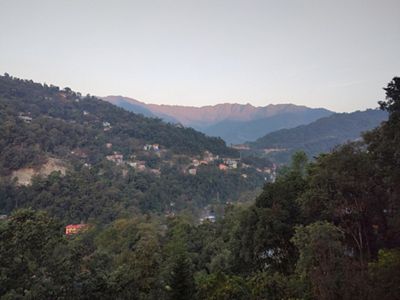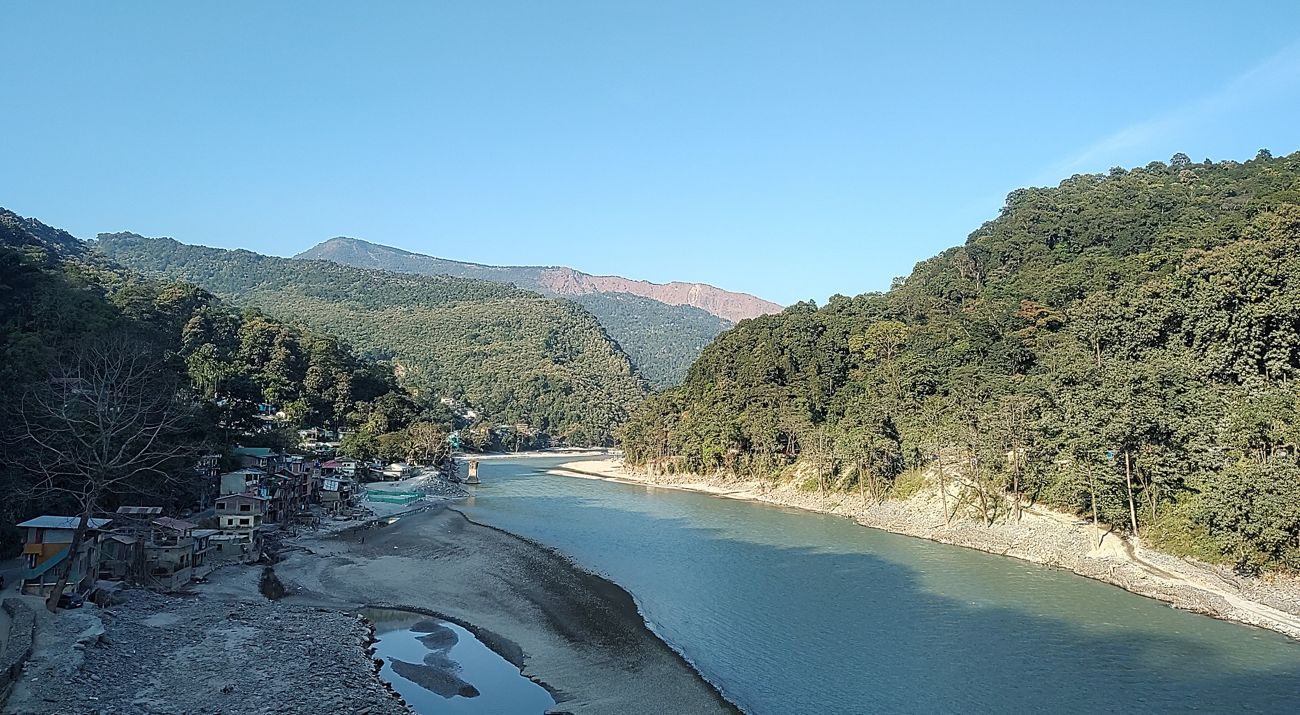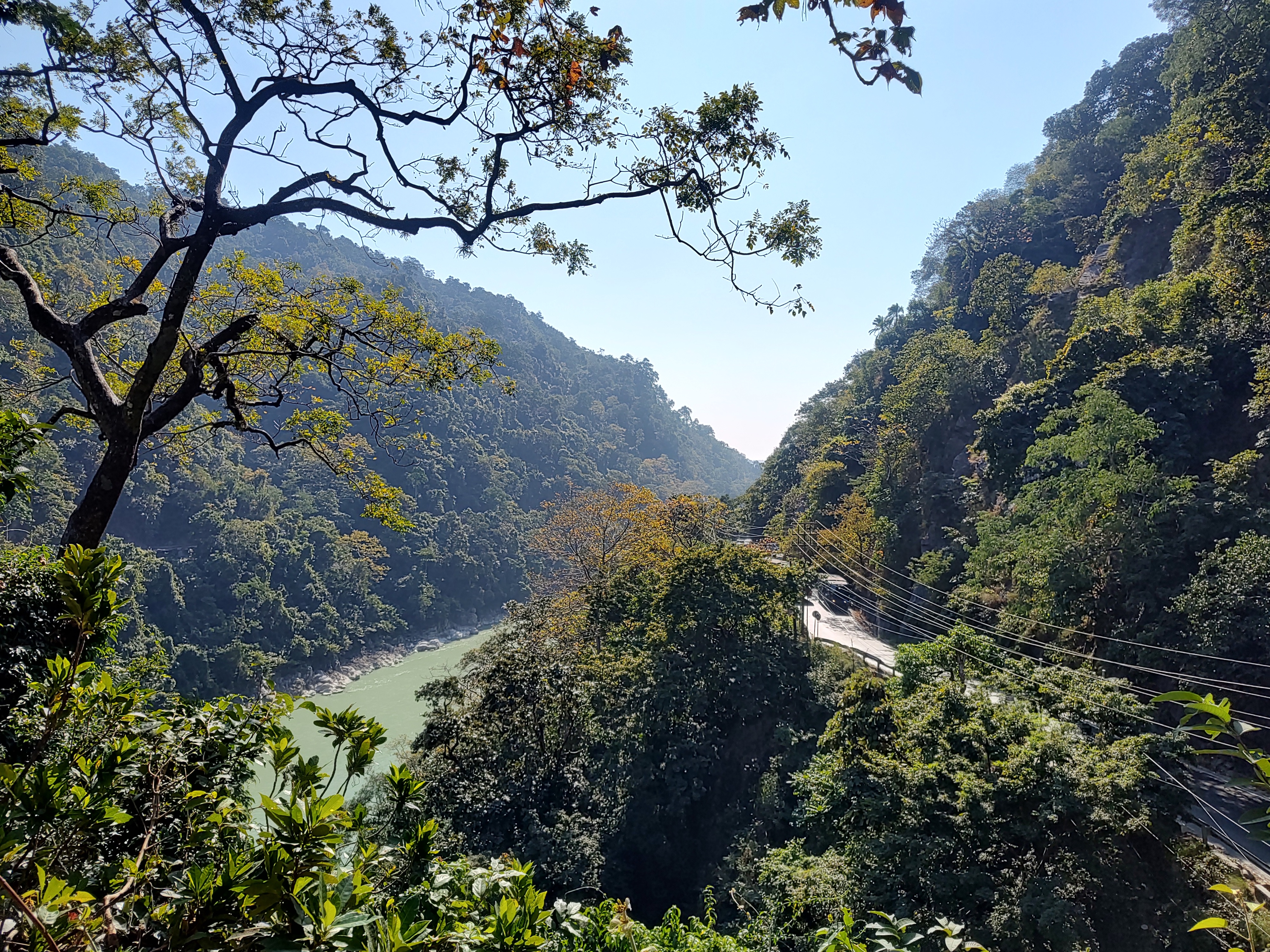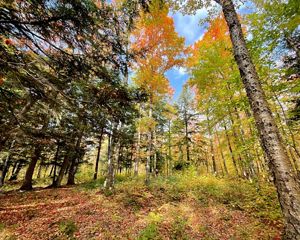Sikkim is home to vast forest resources that play a crucial role in carbon sequestration in the region. The northeastern state’s total forest area measures 5,841 square kilometres and covers 3,358 square kilometres, according to the Indian State of Forest Report 2023.
Sikkim is bestowed with majestic mountains, beautiful hills and valleys, crystal clear waterfalls, springs and lakes, rivers and streams, steep and undulating terrains, snow-clad mountains, and low-lying land ranging from an altitude of 310 m (Jorethang) to 8,586m (Mount Khangchendzonga) from MSL. Forest land is interspersed with varied forms of flora and fauna.
The state lies in the Eastern Himalayas, which is a biodiversity hotspot. Forests in Sikkim harbor a host of endemic flora, rare and endangered species of plants and animals, high-value medicinal plants, among other resources. Sikkim is a botanist’s paradise. There are mainly five forest types in Sikkim, namely Sub Tropical, Moist Mixed Deciduous, Wet Temperate, Conifer, and Sub-Alpine Forest.
These forests, which possess diverse flora and fauna, prevent soil erosion, regulate air quality, improve weather patterns and ensure water availability across the region. They also provide livelihood opportunities to their dependent communities, such as sustainable agriculture and eco-tourism.

Sikkim’s forests are currently facing a multitude of challenges, including forest degradation, increased human-wildlife conflicts, deforestation, erratic climate conditions, incessant forest fires at lower elevations, the growth of invasive species and the unlawful logging of resources such as sal and teak trees.
To address these challenges, the Nature Conservancy India Solutions (NCIS) conducted a pre-feasibility study at the request of Sikkim’s Forest and Environmental Department (FED) to identify the most appropriate and cost-effective forest pathways (afforestation/reforestation, avoided planned and unplanned deforestation/degradation, agroforestry, etc.).
This study will help FED, Sikkim and organizations to make an informed decision toward developing carbon projects that can enter global voluntary carbon markets, with maximum climate mitigation potential and sustainable co-benefits.
Quote: Dr. Anjali Acharya
The study helped develop an understanding of the forest landscape and conservation actions and prioritize the most cost-effective forest pathways to achieve the state objectives.
The study was executed under the consultation of FED and Sikkim with the support of TNC’s global partner, TerraCarbon. The scoping study was initiated in June 2024 to evaluate climate mitigation opportunities in Natural Climate Solutions (NCS) pathways, considering mitigation potential, cost-effectiveness, co-benefits and other priorities. The assessment was conducted through a desk-based study using existing geospatial datasets, government data, and published studies across both the Forest Department and community and private land.
This assessment evaluated Natural Climate Solutions (NCS) pathways for Sikkim state, India, focusing on climate mitigation potential, cost-effectiveness and co-benefits.
The Key NCS Pathways Evaluated:
- Agroforestry on fallow agricultural lands
- Reforestation with native forest on fallow agricultural lands
- Conservation/protection of natural forest (REDD)
- Conversion of Cryptomeria japonica plantations to natural forest
The study found that fallow and mixed croplands across the state represent a legacy of abandonment of agricultural lands. It presents opportunities for agroforestry and reforestation in Sikkim. These interventions offer climate mitigation impacts, improved ecological resilience and sustainability of rural communities.
Findings of the study reflected
- The Namchi (South) district consistently presented the highest climate mitigation potentials across NCS pathways.
- Forest protection (REDD), agroforestry and natural reforestation all have potential to generate positive climate mitigation outcomes.
- Conversion of Cryptomeria plantations to natural forest was found to be inviable as a climate mitigation strategy.
The study was conducted through a desk-based assessment using existing geospatial datasets such as land-use land-cover (LULC) maps and forest inventory data provided by the Sikkim Forest and Environment Department (FED) and other published studies related to the NCS pathways and region of interest. It aimed to provide inputs to identify pathways based on cost-effectiveness, mitigation potential, and community and biodiversity impacts to attain objectives in the future in alignment with Sikkim’s climate goals.
We Can’t Save Nature Without You
Sign up here to receive regular updates from The Nature Conservancy.





